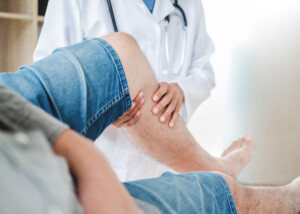If you’ve been treated for a deep vein thrombosis, is it possible that it could come back in its original location?
“Yes, if there is some residual blood clot in the vessel or irritation of the vessel wall that can cause new clot formation,” says Susan L. Besser, MD, with Mercy Medical Center, Baltimore; Diplomate, American Board of Obesity Medicine and board certified by the American Board of Family Medicine.
Symptoms of DVT
If a DVT comes back in its original location, this does not mean the symptoms will be the same as they were the first time around.
So don’t assume that just because there was redness and swelling the first time means there’d be redness and swelling if the DVT returned.
Unusual warmth in the suspected area is also a symptom, as is pain or a strong aching or cramping that doesn’t improve with rest.
However, about half of DVTs do not cause symptoms.
Risk Factors for DVT
Age. As one gets older, the risk heightens, but don’t let your guard down if you’re young with risk factors. Even kids can get a venous blood clot.
Bed rest, excessive. Bed rest of a prolonged nature, regardless of reason, means inactive lower legs which can cause the blood in the veins to pool and clump together.
Birth control pills. Oral contraceptives can thicken the blood.
Blood clot disorder. A person may not know they have this until a DVT forms, and even then, an inherited blood clot disorder is no guarantee you’ll eventually get a blood clot.
Cancer. Not only the disease, but treatment can increase risk of a DVT.
Crohn’s disease and ulcerative colitis.
Heart failure. In heart failure, the heart does not pump adequately.
Hormone replacement therapy. HRT can thicken the blood.
Injury. This can make the blood cells clump together.
Obesity or even overweight. Extra pounds put pressure on veins.
Personal or family history of DVT.
Pregnancy. Pregnancy increases pressure in the pelvic and leg veins. Those with an inherited clotting disorder are especially at risk. The risk from pregnancy can continue for up to six weeks after delivery.
Sitting for long periods of time. This includes prolonged computer work and truck driving without breaks.
Smoking.
Surgery. In particular, hip or knee replacement, and abdominal. The actual surgery itself can damage veins, and then the subsequent period of inactivity also raises the risk.
Even if you have just one known risk factor – that of a personal history of a DVT – it can still return in the exact spot as the original – and as mentioned, will not necessarily yield the same presentation as the first incident.
There is no data, however, on what percentage of people experience a deep vein thrombosis that comes back to its original location.
 Dr. Besser provides comprehensive family care, treating common and acute primary conditions like diabetes and hypertension. Her ongoing approach allows her the opportunity to provide accurate and critical diagnoses of more complex conditions and disorders.
Dr. Besser provides comprehensive family care, treating common and acute primary conditions like diabetes and hypertension. Her ongoing approach allows her the opportunity to provide accurate and critical diagnoses of more complex conditions and disorders.
 Lorra Garrick is a former personal trainer certified by the American Council on Exercise. At Bally Total Fitness she trained clients of all ages for fat loss, muscle building, fitness and improved health.
Lorra Garrick is a former personal trainer certified by the American Council on Exercise. At Bally Total Fitness she trained clients of all ages for fat loss, muscle building, fitness and improved health.
.



























